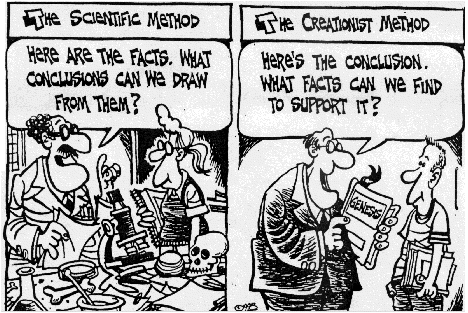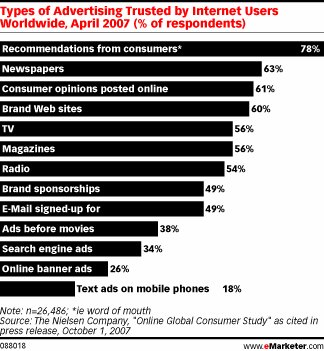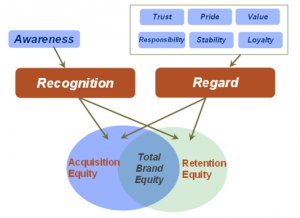Chapter 4
Branding in the Virtual World
Businesses will not become
social unless there is revenue
attached to that action.
Think about it! Businesses
historically have produced
products or services and
distributed them to the market for
consumption. Social was not
historically in the equation.
Revenue and profits are and will
continue to be the primary aim of
a business. Like it or not, revenue
and profits drive businesses and
markets. Without revenue and
profits there would be no market,
no business, and no jobs.
That was the past singular
mindset and then people begin
to connect, converse and
share one-to-one to millions.
Now the influence of conversational rivers is pointed at markets, businesses and their ability to satisfy people. The new market influence is conversations, which either reduce or enhance business revenues and profits. The new market is conversations, which significantly influence revenues.
Need Evidence?
Brands have been flocking to the social web hoping to gain exposure to all of these conversations and just possibly a “click through.” Their approach is not very “social” but they assume that they will benefit just being around the conversations.
Now the conversations are turning onto the brands. Who is bad at customer service, who sells hype, which brand performs the best or the worse? Now threads of individual experiences and open commentary on management, leadership and markets emerge.

As participation grows within and throughout the social web, it will continue to impact business revenue and profits. This shift now has business leaders trying to figure out their “social strategies.” The problem is that past business teachings, environments and cultural constraints have taken away the very social fiber they may have had in the past. Currently, businesses are approaching social conversations and relationships using anti-social methods. It is no wonder why that approach is not working.
Are Ads the Only Advertisements?
The primary revenue model
for most networks is
advertising.
Even with the data
suggesting that “click
throughs” are down,
advertisers continue to
flock to social networking
sites hoping to catch the
attention of users.
However, current
advertising models will not
sustain networks for long because the method is not very social.
Is It How vs. What?
The historical model of advertising used by agencies and bought into by brands is based on impressions and attention. Brands have bought into this model for decades, and the overriding premise is that it is a numbers game.
The problem with this model is that it is in of itself anti-social in a market looking for more Socialutions. Brands want to sell their products. What, the methods, they use to sell their products is based on old mass-marketing models and methodologies. These methods are running into rejections because people know the game and are not buying it, regardless of how good or entertaining a message is crafted.
We are seeing ads appear with social messages. The problem with these methods is that the experience people have with a brand’s product is more about the quality of care given to buyers than it is about the quality of a message. A brand’s message must match up with the quality of experience people have with a product or the company. Doing things right is sometimes more important than trying to say the right things.

Is A New Method (the How) Required?
Brands spend millions of dollars each year advertising using old methods.
When people do respond they often are disappointed with the relational experience they have with the brand’s product, people or processes. These negative experiences are now viral communications by and from the very people that the brand’s ads targeted. The ads may get people attention but a bad experience turns the attention into a complaint that goes viral at the click of a mouse from one-to-one to millions. The complaint then is
“registered” with the world’s largest copy machine, the web, for others to reference forever.
Learning how to manage Socialutions internally first may be the best method before pretending to be something externally. If you master the internal, it will become the best advertising campaign you have ever run. Spending your ad money on internal Socialutions will produce a higher ROI and may be the best message you could send to any market.
Will Advertising Methods Shift?
Table 1: Types of Advertising Trusted by Internet Users Worldwide
(eMarketer, 2007)
Advertising is a form of
communication that typically
attempts to persuade potential
customers to purchase or to
consume more of a particular
brand of product or service.
Advertisers have historically
used every kind of media to
distribute their message as a
means of persuasion. Billions
are spent every year vying for
consumer attention to every
kind of product and service
imaginable. Advertisers are
flocking to the web given the
stats suggest that consumers
are spending more time on the
web than the traditional
mediums of television and print
publications.
Will The Web Force a Shift in Advertising Methods?
Think about the current system of advertising. Brands run banners, text ads, videos, etc., throughout the web. Middleware is offered to ad agencies and advertisers promising to increase “click throughs.” Bloggers are offered to
“earn” commissions for running ads on their blog. Social networks sell ad space to advertisers and individuals alike. Now Google has created a process for individuals and businesses alike to run ads on television. Each new technological advancement promises to match ads with user affinities and preferences, thus aiming at target advertising.
The basic advertising model is a game of statistics. The assumption is that the more people exposed to my ad the greater the response. The likelihood of a response translating into a transaction is another game of statistics. However, the first and second part of the statistical game is an old model with low yields. Yet every brand, every agency and every technology built for advertising is based on these old models.
Is There a Better Socialution for Advertising?
Advertising is part of a system of commerce. Commerce is driven by an exchange of value formalized in a transaction that creates some form of economics. An exchange of value for some other form of value creates economic returns.
Boiled down to fundamentals, any exchange of value starts and ends with interactions between people. People may use technology in the process, but the stimulus and subsequent purchase decision is people oriented.
Today’s advertising models are based on a statistical game of impressions.
The irony is that people are becoming more sophisticated and less and less impressed by these models and the historical tricks of the trade.
As the Social Era emerges, the fundamentals of advertising will shift from a game of impressions to a process of relational referrals.
Relational referrals come from fixing a problem or satisfying needs known and unknown. Relational referrals have and will continue to scale with enormous influence, one-to-one to millions, and that influence can create or shift entire markets at the click of a mouse.
For business, this means the money being spent on old advertising models needs to shift to solving problems and filling needs. Today’s social technologies can enable businesses to fix problems and fill needs if Socialutions are internalized. Advertising could become more effective by simply telling your story or letting the people tell it for you. After all, an exchange starts and ends with people.

How Long Can They Pretend
Tony Laubach, 2008 Brands, are
hiring people to lead their “social
initiatives.” Armed with some
perceived power afforded by the
new position, these individuals
charge forward with initiatives to
help the brands become more
social and responsive to
customers.
They engage in Twitter, get their
brands positioned with a blog, gain
presence in “communities,” and try
to position the brand as “open and willing to change” based on customer feedback and desires. These new “social contacts” for brands may be like a deer staring into the headlights of an oncoming car.
Change Does Not Come from Pretending to be Social The quality of social interaction is driven by the organizations entire “system” of interactions led by management. The current craze by brands wanting to ride the “social wave” is akin to corporations trying to ride the “quality movement” of the 80’s and 90’s. Those that used quality as a differential started by changing the thinking that managed the “system” and it permeated from the top down. Those that faked it hired a Quality Guru and made quality their responsibility. The later failed.
In a panel on “Business Innovations that are Changing the World,”
Google Chairman and CEO Eric Schmidt said: “Let’s not forget that the fundamental goal of any corporation is to change the world and not just to satisfy the interests of particular stakeholders. Companies that open themselves up to promoting and fully leveraging the social dimension of human beings in order to create smarter and more effective solutions for social problems will be the winners of this new social economy.” Why Pretending is Easy to Detect
A brand may understand all the social tools but knowing “how” to use them to fix their own house is another issue. A garage could be full of tools but that does not mean that the owner can build a house.
Customers know brands based on past experiences. Hiring people to manage a social initiative is not the Socialution. Most organizational cultures have not built “social environments” required for inside changes.

Unless leadership of an organization starts from the inside out, then any social initiative is likely to be labeled as fake and insincere and not a real Socialution. Pretending to be something you are not is antisocial and people can see, hear, and smell it a mile away.
If you continue pretending the situation will only get worse, and the outcomes of antisocial behavior is that people will no longer consider you a friend. With less and less friends to support you who will pay your future bills? If your actions are consistently antisocial but you consider yourself BIG enough to bully a market, beware. The market is collectively BIGGER than you ever thought you could be, and markets can shift at the click of a mouse. What happens to the deer that does not move even though a moving car approaches?
An Iceberg for Brands?
Ninety percent of an iceberg is beneath the
surface of the water. A similar analogy can
be made for users of social networks. One
individual may be seen and yet ninety
percent of an individual’s influence is below the “virtual surface.” If one individual has a bad experience with a brand, the impact
of sharing that experience with
“communities” creates a rippling effect
below the surface.
Ripples can build steam and momentum
depending on how many others join into
the conversational swarm and add to the
initial impact of a conversation. The
conversational waves only get worse when a brand simply decides not to engage or respond to peoples’ issues.
Case in point: A long time supporter of LinkedIn™ who managed the flow of communications reaching over 100,000 people through dozens of forums and groups centric to LinkedIn™ abandoned LinkedIn™--abandoned meaning he deleted his profile on LinkedIn™ and all the groups he had formed on LinkedIn™. Subsequently he made the announcement through all the forums he manages and the groups on LinkedIn™. Four years of effort centric to LinkedIn™ stopped at the click of a mouse, and tens of thousands of individuals were informed and with an explanation as to why. The fundamental reason for his actions was relative to: 1. LinkedIn™ not responding to his own efforts of four years to provide them with a forum for user feedback.
2. LinkedIn™ making policy decisions and changing the rules of their network without consideration or feedback from the users.

3. Fundamentally LinkedIn™ actions or lack of actions implied that the user, the collection of users and their subsequent feedback were not of strategic importance.
The outcomes of his decisions are yet to be known but likely to be felt for some time as the word spreads one-to-one to a million or more. While, he has determined to reinstate his participation, his vocal evangelism is very tempered.
Lessons for Brands
Beware of ignoring your customer. The Titanic failed to see the tip of the iceberg as it forged ahead on its proclaimed historic voyage. The captain and the first class passengers were all giddy with excitement about the ship and their status as the “first passengers.” The ship builders were counting their money before the ship reached its destination. Then their world changed because the captain of the ship failed to see the approaching iceberg even though he knew the waters were filled with them and should have prepared and made corrections. The iceberg sank the ship.
The Socialution for a brand is to leverage social technology and respond to the customers’ feedback. If you are a brand and not good at responding to customers, or if your marketing efforts are filled with false promises, you may hit an iceberg. It may not sink you but it can cause you significant damages. Are you listening?
Who Controls Brand Equity?
Brand equity refers to the marketing effects or outcomes that accrue to a product with its brand name. In addition, at the root of these marketing effects is consumers’ knowledge. In other words, consumers’ knowledge about a brand makes consumers respond differently to the marketing of the brand. Who Controls Brand Equity?
In the Web 1.0 days, brand equity
was controlled by one-way
communications to the public using
multiple mediums of
communications. Catchy
advertising and slick marketing
messages were used to capture
consumers’ attention to brand
offerings. Billions were spent
running banner advertisements all
over the web, and billions more
were spent on TV ads all aimed at
catching our attention and tempting us with value propositions. Whether the brand experience was good or bad, consumers did not have the means for mass distribution and sharing their experiences with other consumers.
Has Control Shifted?
Michael Emerson, chief marketing officer, Aprimo wrote: In marketing, we are trained to think that brand value comes with complete control and execution, but now we need to understand that our customers also have a say in how our brand is communicated.
Today Web 2.0 enables connected conversations to flow like swelling rivers of influence. These conversational rivers build momentum as consumers communicate both good and bad experiences with brands. Anything and everything about any brand is fair game for consumers eager to express their experiences. Promises of product or service delivery not met or continuous poor customer service can become a swelling river that gains significant momentum at the click of a mouse. Control over brand equity has clearly shifted.
What Can Brands Do?
There are five things that all brands will need to do in order to shift the conversational rivers and leverage them into protecting and building brand value. These are:
1. Recognize that a shift has occurred; ignoring it will be to your detriment.
2. Engage in the conversation. Not engaging means that you do not care what the customer has to say.
3. Admit your shortcomings. Denying it will make things worse and everyone already knows.
4. Fix the obvious and tell the customer what you are doing to fix it but most of all fix it.
5. Stop the old and start the new. Marketing, PR and overall communications need to change. Start by changing your thinking.
Not only have the rules of your game changed, but the customers have created an entirely different game. Not participating in the new game will cost you and your shareholders dearly. By the way, the conversational rivers are reaching your shareholders who are concerned about your brand equity.
Are you? If you are concerned, do something that clearly communicates to the people that you not only are listening but that you can hear. There is a difference.
References
Brand Equity. Retrieved May 23, 2008, from
http://www.burke.com/Services/CMR/images/Brand_EquityImage3.png Emerson, Michael. (2008, April 1). Connecting the Marketing Community.
Retrieved May 23, 2008, from
http://www.imediaconnection.com/profiles/iMedia_PC_Overview.aspx?ID=11
048
Iceberg Image. Retrieved May 28, 2008, from
http://www.eduplace.com/kids/tnc/gr4/gr4_th1_sel3.html Laubach, Tony. Copyright Tony Laubach. All Rights Reserved. Used with Permission, 2008. Tornadoes Kick Storm Chasing.
http://www.tornadoeskick.com
Schmidt, Eric. (2008, April 29). Business Innovations that are Changing the World. Retrieved May 22, 2008, from
http://www.milkeninstitute.org/events/gcprogram.taf?function=detail&eventi d=GC08&EvID=1395
The Scientific Method and The Creationist Method. Retrieved May 30, 2008, from http://www.xanga.com/supercurls/654589358/item.html










